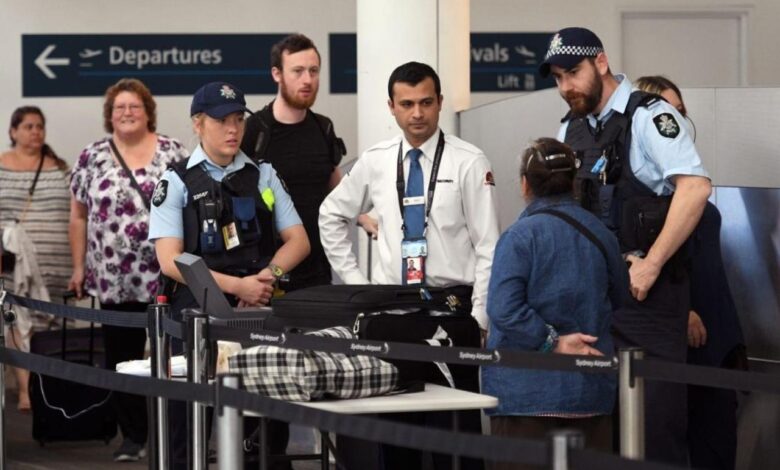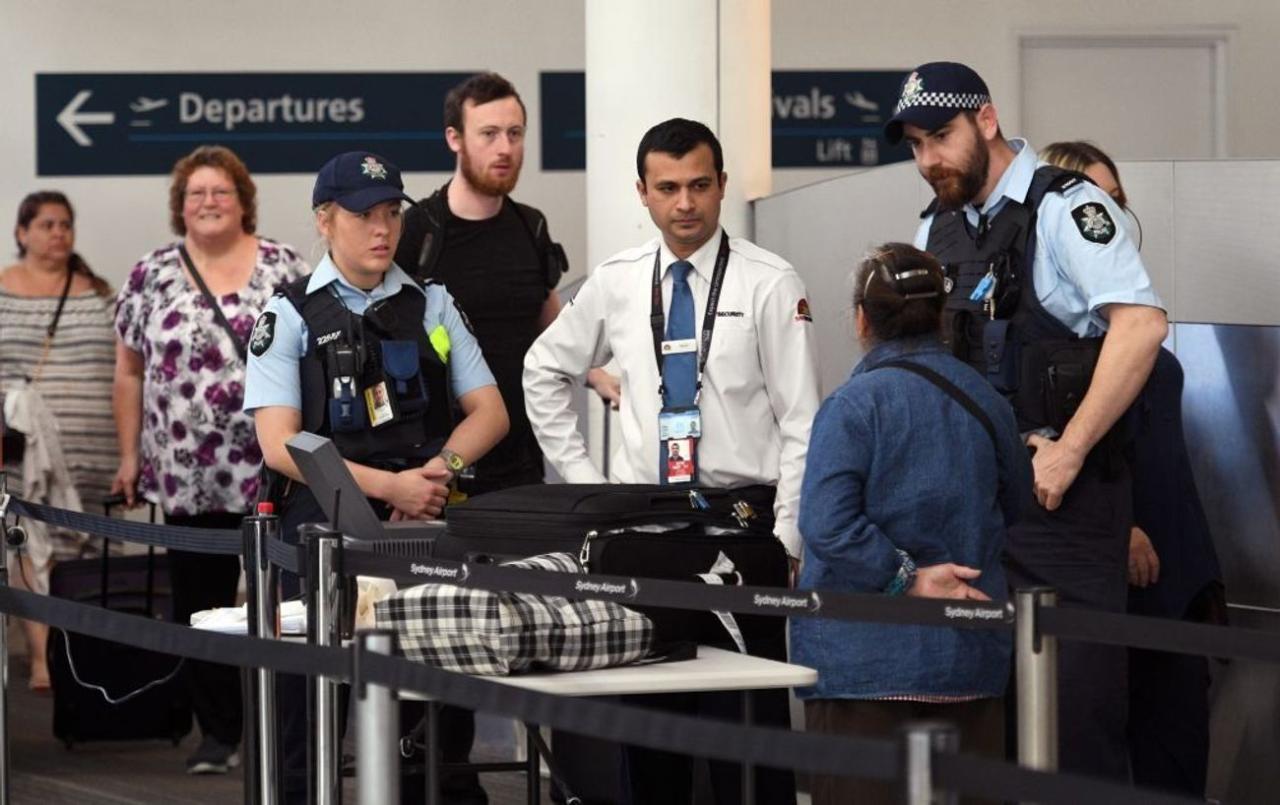
Australia Has Declared Cyber War on ISIS
Australia has declared a war against ISIS in cyberspace. This isn’t a conventional conflict with bombs and bullets, but a battle fought in the digital realm, a shadowy war waged with malware, disinformation campaigns, and sophisticated hacking techniques. It’s a fascinating and increasingly relevant aspect of modern warfare, raising questions about international law, the effectiveness of cyberattacks, and the potential for unintended consequences.
This post delves into the complexities of this digital battlefield, examining Australia’s capabilities, ISIS’s online strategies, and the broader implications of this unconventional conflict.
The Australian government’s decision to engage ISIS in cyberspace stems from the group’s extensive use of the internet for propaganda, recruitment, and planning of attacks. Australia’s cyber capabilities, while not publicly detailed in their entirety, are understood to be significant, involving specialized units within its intelligence agencies and military. The challenge lies in the attribution of attacks in the digital realm – proving definitively that a particular action was taken by ISIS, and not a state actor or another group, presents a considerable hurdle.
The legal and ethical grey areas surrounding cyber warfare add another layer of complexity to this unfolding story.
Australia’s Cyber Capabilities
Australia’s engagement in cyber warfare, particularly against ISIS, highlights the nation’s growing investment in and reliance upon its digital defense and offensive capabilities. While specifics remain classified for national security reasons, publicly available information reveals a sophisticated, albeit relatively smaller-scale, cyber arsenal compared to global giants like the US or China. The nation’s cyber capabilities are continuously evolving to meet the ever-changing landscape of online threats and conflicts.Australia’s cyber capabilities encompass a range of offensive and defensive measures.
The country possesses the ability to conduct sophisticated cyberattacks, including denial-of-service attacks, data breaches, and the infiltration of enemy networks to gather intelligence. Defensively, Australia invests heavily in protecting critical infrastructure, government systems, and private sector entities from cyber threats emanating from state and non-state actors, such as ISIS. This involves robust intrusion detection systems, advanced threat intelligence analysis, and incident response teams capable of mitigating the effects of attacks and recovering from breaches.
Types of Cyberattacks and Defenses
Australia’s cyber arsenal includes capabilities to launch and defend against a variety of cyberattacks. Offensive capabilities likely include the deployment of malware, exploitation of vulnerabilities in software and hardware, and the manipulation of data streams to disrupt operations or steal sensitive information. Defensive capabilities focus on threat intelligence gathering, proactive vulnerability management, and the deployment of advanced security technologies to detect and prevent attacks.
The Australian Signals Directorate (ASD), the nation’s primary signals intelligence agency, plays a crucial role in both offensive and defensive cyber operations. Their expertise spans network security, cryptography, and the development of specialized tools and techniques for cyber warfare. Furthermore, they are responsible for coordinating national cyber security efforts and advising government and private sector entities on best practices.
Comparison with Other Nations, Australia has declared a war against isis in cyberspace
Compared to global powers like the United States and China, Australia’s cyber capabilities are smaller in scale but highly specialized and effective within its operational context. While the US and China possess significantly larger cyber armies and more extensive resources, Australia focuses its efforts on specific threats relevant to its national security interests, such as counter-terrorism operations. This targeted approach allows for a high degree of effectiveness against specific adversaries like ISIS, although it may lack the breadth of capabilities possessed by larger nations that must contend with a wider range of threats.
The UK and other Five Eyes partners (US, Canada, New Zealand) maintain a similar level of sophistication, enabling effective collaboration and intelligence sharing in counter-terrorism cyber operations.
Key Personnel and Agencies Involved in Australia’s Cyber Operations
The following table Artikels some key players in Australia’s cyber security and operations landscape. Note that the full extent of personnel and activities involved remains classified.
Australia’s cyber war against ISIS highlights the need for robust digital defenses. Developing these defenses requires efficient and scalable solutions, which is where the advancements in domino app dev, the low-code and pro-code future , come into play. These tools could significantly speed up the creation of crucial cybersecurity applications, bolstering Australia’s capabilities in this digital battlefield.
The fight against online extremism demands innovative tech solutions, and this is where we need to focus our energy.
| Agency | Role | Key Personnel (Examples – Publicly Available Information Only) | Specific Cyber Capabilities (General) |
|---|---|---|---|
| Australian Signals Directorate (ASD) | Signals intelligence, cyber security, offensive and defensive cyber operations | (Director’s name and other senior leadership positions are typically publicly available but are omitted here for security reasons) | SIGINT, network security, malware analysis, incident response |
| Australian Cyber Security Centre (ACSC) | National cyber security coordination, incident response, threat intelligence | (Similar to ASD, specific personnel information is not publicly released for security reasons) | Cyber threat assessment, incident response, vulnerability management |
| Department of Defence | Defence-related cyber operations and infrastructure protection | (Again, publicly available information on specific personnel is limited for security reasons) | Military network security, protection of critical defence systems |
| Australian Federal Police (AFP) | Law enforcement related to cybercrime | (Similar to the above, specific personnel details are not publicly disclosed) | Cybercrime investigations, prosecution of cyber criminals |
ISIS’s Cyber Operations

ISIS, despite its territorial losses, maintained a significant online presence, leveraging the internet for propaganda, recruitment, and even limited cyberattacks. Their cyber capabilities, while not on par with state-sponsored actors, presented a concerning threat, particularly due to their sophisticated use of readily available tools and their understanding of online radicalization.ISIS’s online propaganda and recruitment efforts were extensive and highly effective, particularly in the early to mid-2010s.
ISIS Propaganda and Recruitment Methods
ISIS utilized various online platforms, including social media sites like Twitter and Facebook (before widespread bans), encrypted messaging apps such as Telegram, and even online forums to disseminate propaganda and recruit new members. Their messaging focused on religious zealotry, promises of brotherhood and belonging, and showcasing a romanticized version of life within the caliphate. They employed high-quality videos, often graphically violent, to attract attention and shock potential recruits.
The use of multilingual content expanded their reach to a global audience. This sophisticated propaganda machine successfully attracted individuals from diverse backgrounds and locations, contributing to the group’s rapid expansion.
ISIS Cyberattack Methods
While ISIS’s cyberattacks were less frequent and less sophisticated than their propaganda efforts, they still posed a threat. Their methods generally involved leveraging readily available hacking tools and techniques, focusing on disruption rather than large-scale data breaches or sophisticated espionage. They primarily targeted government websites and infrastructure, often using distributed denial-of-service (DDoS) attacks to overwhelm servers and render them temporarily inaccessible.
These attacks served primarily as a form of symbolic warfare, aiming to demonstrate their capabilities and spread fear. Additionally, they used social engineering tactics, such as phishing emails, to target individuals for information gathering or to spread malware.
Effectiveness of ISIS Cyber Operations
The effectiveness of ISIS’s cyber operations is a complex issue. While their propaganda efforts proved remarkably successful in recruitment and ideological dissemination, their cyberattacks had a more limited impact. The DDoS attacks, though disruptive, rarely caused long-term damage or significantly hampered the operations of their targets. The impact of their attacks was often more psychological than material, serving to spread fear and demonstrate a level of technical capability.
However, the success of their propaganda campaign cannot be understated; it directly contributed to the group’s growth and operational capacity.
Examples of ISIS Cyberattacks
Attributing specific cyberattacks definitively to ISIS is challenging due to the decentralized nature of their operations and the difficulty in tracing attacks back to their source. However, several attacks have been linked to the group or its supporters, including several DDoS attacks against various government websites in the West and in the Middle East. While the specific targets and details vary, the overall pattern remains consistent: using readily available tools to launch relatively unsophisticated, but symbolically impactful, attacks.
The lack of attribution in many cases hinders a complete understanding of their full cyber capabilities.
The Nature of a “Cyber War”

Defining “cyber war” is tricky, as it lacks a universally agreed-upon definition. It’s not simply a collection of cyberattacks; instead, it signifies a state-sponsored, large-scale, and sustained campaign of cyber operations aimed at achieving significant strategic military or political objectives. This distinguishes it from other forms of cyber conflict, such as cybercrime (motivated by financial gain) or cyber espionage (focused on intelligence gathering).
A cyber war implies a level of intensity and organization far exceeding isolated incidents.The key element is the deliberate and strategic use of cyber capabilities to inflict damage or disrupt critical infrastructure, potentially escalating to the level of a kinetic conflict. Think of it as a war fought on a digital battlefield, with data, networks, and systems as the weapons and targets.
Legal and Ethical Considerations in Cyber Warfare
The legal landscape surrounding cyber warfare is still developing. International humanitarian law (IHL), specifically the Geneva Conventions, applies to the extent that cyberattacks cause physical harm or affect civilian populations. However, the lack of clear definitions and the inherent difficulties in attribution make applying these laws challenging. There’s a significant grey area where cyberattacks may not directly cause physical damage but still inflict substantial economic or societal harm.
Ethical considerations center on proportionality (the response should be proportionate to the attack), distinction (between military and civilian targets), and precaution (to minimize civilian casualties). The potential for escalation and unintended consequences is a major ethical concern.
Relevant International Laws and Treaties
While no single treaty explicitly governs cyber warfare, several international laws and treaties provide a framework for addressing state behavior in cyberspace. The UN Charter prohibits the use of force against the territorial integrity or political independence of any state. The 1949 Geneva Conventions and their additional protocols, while not directly addressing cyberattacks, offer relevant principles regarding the protection of civilians and the prohibition of attacks against civilian objects.
Furthermore, the Tallinn Manual on the International Law Applicable to Cyber Warfare, while not legally binding, offers a valuable scholarly analysis of existing international law as it applies to cyber operations. Its influence lies in its contribution to the ongoing debate and development of norms in cyberspace.
Attribution Challenges in Cyber Warfare
Attributing cyberattacks is notoriously difficult. Sophisticated attackers often employ techniques to mask their origins, such as using botnets, proxy servers, and false flags. This makes it challenging to definitively link a specific cyberattack to a particular state actor. Consider this hypothetical scenario: Australia’s critical energy grid experiences a significant outage. Initial investigation reveals traces of malware consistent with techniques used by ISIS-affiliated groups.
However, the malware has been modified, and the attack path is obscured through a series of compromised servers located across multiple countries. Further investigation reveals that the initial compromise may have been through a seemingly insignificant vulnerability in a third-party supplier’s software, leaving multiple potential points of origin and making it nearly impossible to definitively prove ISIS’s direct involvement without irrefutable evidence.
This difficulty in attribution significantly complicates responses and raises the threshold for retaliation, given the risk of misattribution and potential escalation.
Impact and Consequences: Australia Has Declared A War Against Isis In Cyberspace
Australia’s cyber operations against ISIS, while potentially disruptive, carry significant implications that extend far beyond the immediate battlefield. The success or failure of these operations will have profound effects on both the immediate capabilities of ISIS and the broader landscape of international relations and cybersecurity. Understanding these potential impacts is crucial to assessing the overall effectiveness and ethical considerations of this unconventional warfare.The impact of Australia’s cyber operations on ISIS’s capabilities could be substantial, particularly in their ability to recruit, propagandize, and plan attacks.
Successful disruption of ISIS’s online infrastructure could significantly hinder their communication networks, making it more difficult to coordinate activities and disseminate extremist ideologies. However, ISIS has demonstrated adaptability and resilience in the past, potentially shifting to alternative communication channels or employing more sophisticated encryption techniques to circumvent Australian efforts. The effectiveness will ultimately depend on the sophistication of Australia’s cyber capabilities and ISIS’s capacity to adapt and counter these actions.
Potential Risks and Unintended Consequences of Cyber Warfare
Cyber warfare, by its very nature, is difficult to control and predict. One major risk is the potential for escalation. A seemingly limited cyberattack could trigger a retaliatory response, leading to a dangerous cycle of escalation that could spill over into the physical realm. For example, a cyberattack targeting critical infrastructure could have devastating consequences, causing widespread power outages or disrupting essential services.
Another significant risk is the difficulty in attributing attacks. The anonymity afforded by the internet makes it challenging to definitively identify the perpetrators of cyberattacks, leading to miscalculations and potential misattribution, potentially sparking international incidents. The use of sophisticated cyber weapons also carries the risk of unintended consequences, such as collateral damage to civilian systems or the accidental targeting of non-combatants.
Consider the Stuxnet worm, which, while initially successful in targeting Iranian nuclear facilities, also revealed vulnerabilities in industrial control systems globally.
Potential Responses from Other Nations
Australia’s actions may elicit a range of responses from other nations. Some countries might applaud Australia’s proactive approach to counterterrorism, viewing it as a necessary measure to combat the growing threat of ISIS’s online activities. Others, particularly those with close ties to ISIS or those concerned about the potential for misuse of cyber warfare, may condemn Australia’s actions, raising concerns about international law and the potential for escalation.
There’s also the possibility of other states, either directly or indirectly supporting ISIS, launching counter-cyber operations against Australia or its allies, increasing the potential for a wider cyber conflict. The response from international organizations like the UN will be crucial in shaping the international legal and normative frameworks surrounding cyber warfare.
Potential Long-Term Implications for International Relations
The long-term implications of Australia’s cyber operations are far-reaching and uncertain. It could lead to a new arms race in cyberspace, with nations investing heavily in offensive and defensive cyber capabilities. This could further destabilize international relations, creating a climate of mistrust and suspicion. The development of international norms and laws governing cyber warfare will be critical in mitigating these risks.
However, the lack of a universally accepted framework for cyber conflict increases the likelihood of miscalculation and accidental escalation. The establishment of international cooperation mechanisms to address cyber threats is essential, but achieving consensus among diverse nations with varying interests and capabilities will be a significant challenge. This situation presents a precedent for future cyber conflicts, potentially impacting how nations engage in warfare and international relations in the decades to come.
Propaganda and Public Perception

Australia’s declaration of cyber war against ISIS will undoubtedly generate a complex and multifaceted media landscape, both domestically and internationally. The narratives spun by various actors – the Australian government, ISIS itself, international news outlets, and social media influencers – will significantly shape public opinion, potentially influencing everything from domestic support for the conflict to international perceptions of Australia’s role in global cybersecurity.The potential for misinformation and disinformation campaigns is considerable.
ISIS, known for its sophisticated propaganda machine, could leverage this declaration to garner sympathy, recruit new members, or sow discord within Australia and its allies. Conversely, the Australian government faces the challenge of communicating the complexities of cyber warfare to a public largely unfamiliar with its intricacies, while simultaneously countering any false narratives propagated by ISIS or other actors.
Misinformation might include exaggerated claims of Australian cyberattacks’ effectiveness or ISIS’s capabilities, while disinformation could involve fabricated evidence or manipulated videos aiming to undermine public confidence in the Australian government.
Domestic Media Portrayals
Australian media coverage will likely be highly polarized. Pro-government outlets might emphasize the necessity of the cyber war, highlighting ISIS’s online activities and the need to protect national security. Conversely, more critical outlets could question the legality and effectiveness of such a strategy, potentially raising concerns about civilian casualties or unintended consequences in the digital realm. The debate will likely center on the balance between national security and civil liberties in the context of cyber warfare.
We might see opinion pieces arguing for greater transparency regarding the government’s cyber operations or expressing concern over potential overreach.
International Media Portrayals
Internationally, the response will vary greatly depending on the geopolitical stances of different nations. Allies might offer cautious support, while countries with strained relations with Australia might criticize the action as an escalation of conflict or a violation of international law. Neutral observers might focus on the legal and ethical ambiguities of cyber warfare, analyzing the proportionality of the Australian response and its potential impact on global cybersecurity norms.
Coverage will also likely focus on the potential for unintended consequences, such as the spread of cyberattacks beyond ISIS targets.
Potential for Misinformation and Disinformation Campaigns
The potential for misinformation and disinformation is high. ISIS could release fabricated evidence of Australian cyberattacks causing civilian harm, aiming to generate negative international opinion and undermine public support for the conflict. Conversely, pro-government actors could exaggerate the effectiveness of Australian cyber operations, creating a misleading impression of success. Social media platforms will be a critical battleground for these campaigns, with both sides utilizing bots, trolls, and carefully crafted narratives to influence public perception.
The speed and global reach of online misinformation necessitate a swift and robust counter-narrative strategy.
Potential Counter-Narratives for Australia
Australia needs a proactive communication strategy to counter potential misinformation and disinformation. This strategy should:
- Clearly articulate the strategic goals and limitations of the cyber war, emphasizing the focus on disrupting ISIS’s operations and minimizing civilian harm.
- Provide regular, transparent updates on the campaign’s progress, acknowledging both successes and challenges.
- Partner with international organizations and allies to establish a unified narrative and counter disinformation collaboratively.
- Invest in media literacy programs to help citizens critically evaluate online information and identify misinformation.
- Utilize social media platforms to proactively engage with the public and directly address false narratives.
- Establish a dedicated task force to monitor and respond to disinformation campaigns in real-time.
Illustrative Examples
Understanding the complexities of cyber warfare requires examining both successful and unsuccessful operations, as well as considering the potential impact of attacks on critical infrastructure. These hypothetical scenarios, while fictional, are grounded in real-world capabilities and vulnerabilities.
Successful Cyber Operation Against ISIS Infrastructure
Imagine a coordinated operation targeting ISIS’s online propaganda network. Australian cyber forces, leveraging advanced intelligence, identify a central server farm in a known ISIS-controlled territory. This farm hosts websites, social media accounts, and encrypted communication channels used for recruitment and operational planning. The operation employs a multi-pronged approach. First, a sophisticated denial-of-service (DoS) attack overwhelms the servers, rendering them inaccessible.
Simultaneously, a targeted intrusion uses zero-day exploits to gain access to the servers, exfiltrating crucial data like membership lists, operational plans, and financial records. Finally, the servers are permanently disabled through a combination of data deletion and hardware compromise. This operation severely disrupts ISIS’s communication and recruitment efforts, significantly impacting their ability to operate effectively. The intelligence gathered provides valuable insights into their organization and future plans, informing further counter-terrorism strategies.
Failed Cyber Operation and its Ramifications
Conversely, consider a scenario where an attempt to disrupt ISIS’s financial network through a malware attack fails. The malware, designed to infiltrate and disable financial transactions, is detected by ISIS’s rudimentary cybersecurity measures – surprisingly robust due to assistance from a nation-state actor. The malware is contained, but not before it inadvertently triggers a system-wide alert, exposing the Australian operation.
The technical failure stems from a poorly implemented obfuscation technique within the malware, allowing ISIS to identify its origin. The ramifications are significant. The failed operation damages Australia’s credibility in the cyber domain, potentially emboldening ISIS and other adversaries. It also raises concerns about the security of Australia’s own cyber capabilities, leading to public scrutiny and a need for reassessment of strategies and resources.
This failure could even lead to retaliatory cyberattacks against Australian targets.
Successful ISIS Cyberattack on Australian Infrastructure
A hypothetical successful ISIS cyberattack could target Australia’s power grid. The attack leverages a combination of phishing emails and compromised smart meters to gain access to the grid’s control systems. The attackers then use this access to initiate a cascading failure, starting with localized outages and escalating to widespread blackouts across major cities. This disruption cripples essential services, including hospitals, transportation, and communication networks.
The economic consequences are immense, leading to significant financial losses and widespread social unrest. The attack’s psychological impact is equally significant, demonstrating ISIS’s ability to strike at the heart of Australian infrastructure and highlighting the country’s vulnerability to cyber threats. The recovery process would be lengthy and costly, requiring substantial investment in infrastructure upgrades and enhanced cybersecurity measures.
Conclusive Thoughts
Australia’s declaration of cyber war against ISIS marks a significant escalation in the fight against terrorism in the digital age. While the specifics of these operations remain largely classified, the conflict highlights the growing importance of cyberspace as a battleground. The potential for both success and unintended consequences is high, underscoring the need for careful consideration of the legal, ethical, and strategic implications of cyber warfare.
This isn’t just a fight against ISIS; it’s a test of Australia’s ability to navigate the treacherous waters of digital conflict and a preview of the battles to come in this increasingly important domain.
Commonly Asked Questions
What specific cyberattacks has Australia launched against ISIS?
Details of specific operations are generally classified for national security reasons. Public information is limited to general statements about disrupting ISIS’s online activities.
What are the legal implications of Australia’s actions?
International law regarding cyber warfare is still developing. Australia’s actions are likely subject to international humanitarian law and other relevant treaties, but the exact application is debated.
How effective is this cyber war likely to be?
Effectiveness is difficult to measure. While disrupting ISIS’s online presence can hinder recruitment and propaganda, it’s unlikely to eliminate the threat entirely. The nature of cyber warfare makes measuring long-term success challenging.
What are the potential risks of unintended consequences?
Risks include collateral damage to civilian infrastructure, escalation of conflict, and the potential for other actors to exploit vulnerabilities created by cyberattacks. Attribution difficulties can also lead to miscalculations and unintended retaliatory actions.





